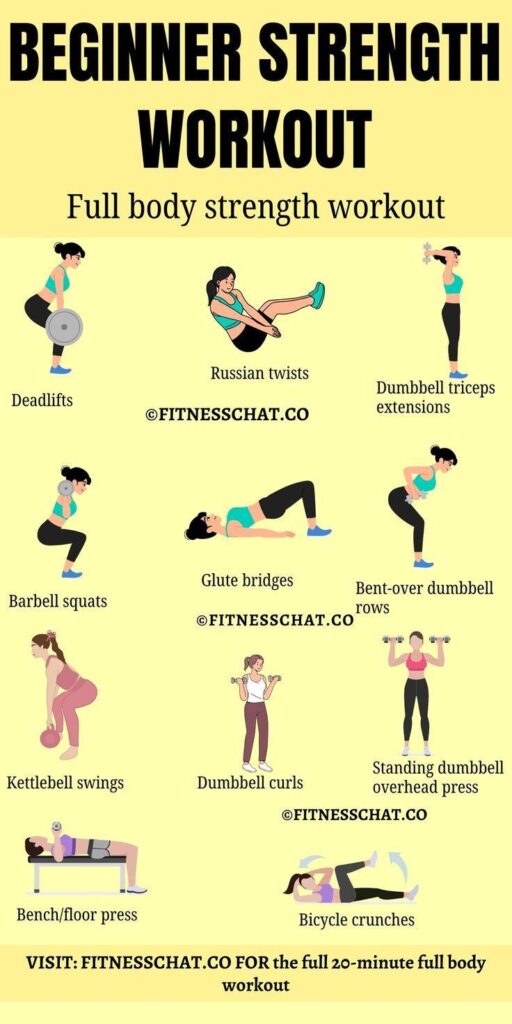When it comes to building muscle and increasing power, not all exercises are created equal. Whether you’re a seasoned athlete or just starting your fitness journey, incorporating the right strength exercises into your routine is crucial for maximizing gains and enhancing performance. In this article, we’ll explore the essential strength exercises that form the foundation of any effective muscle-building program. From compound lifts to targeted movements,these exercises are designed to help you develop functional strength,boost muscle growth,and unleash your full power potential. Let’s dive in and discover how to train smarter, not just harder.
Table of Contents
- Benefits of Compound Movements for Muscle Growth
- Optimizing Your Workout Routine with Progressive overload
- Key Tips for Proper Form to Maximize Power Gains
- Incorporating Rest and Recovery for Sustainable Strength Building
- In Summary
Benefits of Compound Movements for Muscle Growth
Compound movements engage multiple muscle groups together, making them incredibly efficient for stimulating widespread muscle growth. Unlike isolation exercises that target a single muscle,these exercises promote enhanced hormonal responses,such as increased testosterone and growth hormone release,which are crucial for maximizing hypertrophy. Additionally, because they recruit more muscle fibers across diffrent joints, you experience greater overall muscle activation, allowing you to lift heavier weights and push your body to new limits.
Incorporating compound exercises into your routine also offers practical benefits that go beyond muscle size. They improve functional strength by mimicking real-world movements, boosting coordination and balance. Key advantages include:
- Efficient Workouts: Train multiple muscles at once, saving time without sacrificing results.
- Enhanced Core Stability: Most compound lifts demand core engagement for proper form and injury prevention.
- Progressive Overload Potential: capability to handle heavier loads accelerates strength gains.
- Improved Metabolic Rate: Higher energy expenditure during and after training supports fat loss alongside muscle gain.
optimizing Your Workout Routine with Progressive overload
Incorporating progressive overload is crucial for continual muscle growth and strength gains.This principle involves systematically increasing the demands placed on your muscles during workouts to drive adaptation.Whether it’s by adding more weight, increasing repetitions, or enhancing time under tension, the key is to challenge your body beyond its current capacity while maintaining proper form.Overloading too quickly can lead to injury, so gradual increments combined with adequate recovery ensure consistent progress without burnout.
Effective strategies include:
- Tracking and recording your workouts to monitor improvements.
- Varying volume and intensity across training cycles to prevent plateaus.
- Incorporating compound lifts that recruit multiple muscle groups.
- Prioritizing proper nutrition to support recovery and muscle repair.
By implementing these methods within your routine,you ensure that your muscles are continuously forced to adapt,ultimately leading to increased size and power. Remember,progressive overload isn’t about pushing to failure every session,but about smart,consistent progression that aligns with your goals.
Key Tips for Proper Form to Maximize Power Gains
Maximizing power gains isn’t solely about lifting heavier weights; it’s about executing each movement with precision. Maintaining proper alignment throughout your lifts ensures that you engage the targeted muscle groups effectively while minimizing injury risks. Focus on keeping your core braced and shoulders retracted to create a strong foundation for every rep. Engaging the correct muscles in a controlled manner,rather than relying on momentum,will significantly improve your power output over time.
In addition, incorporating these essential form strategies will elevate your training:
- Controlled Eccentric Phase: Lower the weight slowly to maximize muscle tension.
- Breathing Technique: Exhale during exertion and inhale as you return to starting position for optimal oxygen flow.
- Stable Foot Placement: Ground yourself firmly to enhance balance and transfer of power.
- Full Range of Motion: Avoid cutting movements short to recruit more muscle fibers and develop strength evenly.
Incorporating rest and Recovery for Sustainable Strength Building
maximizing your gains isn’t just about how hard you push during workouts—it’s equally about the quality of recovery. Rest days allow muscles to repair microtears caused by intense training, which leads to muscle growth and increased strength over time. Neglecting rest can lead to overtraining syndrome, characterized by fatigue, decreased performance, and higher injury risk.Integrating strategic recovery practices such as active rest, which includes light activities like walking or yoga, helps maintain blood flow and flexibility without stressing your muscles further.
To build sustainable strength,consider a balanced approach by implementing these recovery essentials:
- Prioritize 7–9 hours of quality sleep every night for hormonal balance and muscle repair.
- Incorporate stretching and mobility work post-exercise to prevent stiffness and enhance range of motion.
- Use tools like foam rollers to release muscle tension and improve circulation.
- stay hydrated and maintain a nutrient-rich diet to support repair and energy replenishment.
Remember, strength is not just built in the gym—it’s forged in the rest that follows.
In Summary
Incorporating these essential strength exercises into your routine sets a solid foundation for building muscle and boosting power. Remember, consistency and proper form are key to maximizing results and preventing injury. Whether you’re a beginner or looking to elevate your training, focusing on these fundamental movements will help you achieve your fitness goals more efficiently. Stay committed, listen to your body, and watch your strength transform over time. Here’s to lifting smarter and stronger!

